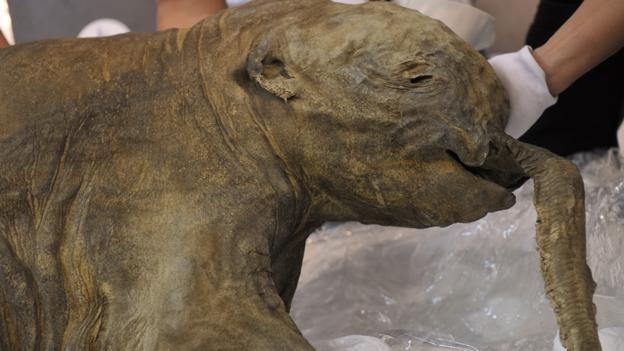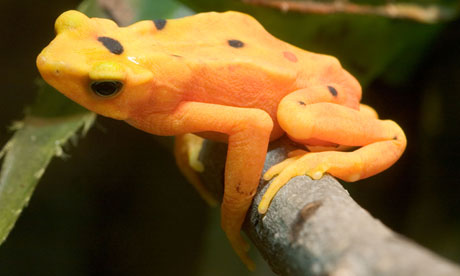Extinct Animals Biography
Source Link Goggle.com.pkIn biology and ecology, extinction is the end of an organism or of a group of organisms (taxon), normally a species. The moment of extinction is generally considered to be the death of the last individual of the species, although the capacity to breed and recover may have been lost before this point. Because a species' potential range may be very large, determining this moment is difficult, and is usually done retrospectively. This difficulty leads to phenomena such as Lazarus taxa, where a species presumed extinct abruptly "re-appears" (typically in the fossil record) after
Through evolution, new species arise through the process of speciation—where new varieties of organisms arise and thrive when they are able to find and exploit an ecological niche—and species become extinct when they are no longer able to survive in changing conditions or against superior competition. The relationship between animals and their ecological niches has been firmly established.[2] A typical species becomes extinct within 10 million years of its first appearance,[3] although some species, called living fossils, survive with virtually no morphological change for hundreds of millions of years. Most extinctions have occurred naturally, prior to Homo sapiens walking on Earth: it is estimated that 99.9% of all species that have ever existed are now extinct.
Mass extinctions are relatively rare events; however, isolated extinctions are quite common. Only recently have extinctions been recorded and scientists have become alarmed at the current high rate of extinctions.[5] Most species that become extinct are never scientifically documented. Some scientists estimate that up to half of presently existing plant and animal species may become extinct by 2100.[6] It is difficult to estimate the trajectory that biodiversity might have taken without human impact but scientists at the University of Bristol estimate that biodiversity might increase exponentially without human influence.A species is extinct when the last existing member dies. Extinction therefore becomes a certainty when there are no surviving individuals that can reproduce and create a new generation. A species may become functionally extinct when only a handful of individuals survive, which cannot reproduce due to poor health, age, sparse distribution over a large range, a lack of individuals of both sexes (in sexually reproducing species), or other
Pinpointing the extinction (or pseudoextinction) of a species requires a clear definition of that species. If it is to be declared extinct, the species in question must be uniquely distinguishable from any ancestor or daughter species, and from any other closely related species. Extinction of a species (or replacement by a daughter species) plays a key role in the punctuated equilibrium hypothesis of Stephen Jay Gould and Niles Eldredge.[8]
In ecology, extinction is often used informally to refer to local extinction, in which a species ceases to exist in the chosen area of study, but may still exist elsewhere. This phenomenon is also known as extirpation. Local extinctions may be followed by a replacement of the species taken from other locations; wolf reintroduction is an example of this. Species which are not extinct are termed extant. Those that are extant but threatened by extinction are referred to as threatened or
Currently an important aspect of extinction is human attempts to preserve critically endangered species. These are reflected by the creation of the conservation status "Extinct in the Wild" (EW). Species listed under this status by the International Union for Conservation of Nature (IUCN) are not known to have any living specimens in the wild, and are maintained only in zoos or other artificial environments. Some of these species are functionally extinct, as they are no longer part of their natural habitat and it is unlikely the species will ever be restored to the wild.[9] When possible, modern zoological institutions try to maintain a viable population for species preservation and possible future reintroduction to the wild, through use of carefully planned breeding programs.
The extinction of one species' wild population can have knock-on effects, causing further extinctions. These are also called "chains of extinction".[10] This is especially common with extinction of keystone species.Descendants may or may not exist for extinct species. Daughter species that evolve from a parent species carry on most of the parent species' genetic information, and even though the parent species may become extinct, the daughter species lives on. Extinction of a parent species where daughter species or subspecies are still extant is called pseudoextinction. In other cases, species have produced no new variants, or none that are able to
Pseudoextinction is difficult to demonstrate unless one has a strong chain of evidence linking a living species to members of a pre-existing species. For example, it is sometimes claimed that the extinct Hyracotherium, which was an early horse that shares a common ancestor with the modern horse, is pseudoextinct, rather than extinct, because there are several extant species of Equus, including zebra and donkey. However, as fossil species typically leave no genetic material behind, one cannot say whether Hyracotherium evolved into more modern horse species or merely evolved from a common ancestor with modern horses. Pseudoextinction is much easier to demonstrate for larger taxonomic groups.he coelacanth, a fish related to lungfish and tetrapods, was considered to have been extinct since the end of the Cretaceous Period until 1938 when a specimen was found, off the Chalumna River (now Tyolomnqa) on the east coast of South Africa.[11] Museum curator Marjorie Courtenay-Latimer discovered the fish among the catch of a local angler, Captain Hendrick Goosen, on December 23, 1938.[11] A local chemistry professor, JLB Smith, confirmed the fish's importance with a famous cable: "MOST IMPORTANT PRESERVE SKELETON AND GILLS = FISH DESCRIBED".[11]
Far more recent possible or presumed extinctions of species which may turn out still to exist include the Thylacine, or Tasmanian Tiger (Thylacinus cynocephalus), the last known example of which died in Hobart Zoo in Tasmania in 1936; the Japanese Wolf (Canis lupus hodophilax), last sighted over 100 years ago; the Ivory-Billed Woodpecker (Campephilus principalis), last sighted for certain in 1944; and the Slender-billed Curlew (Numenius tenuirostris), not seen since 2007As long as species have been evolving, species have been going extinct. It is estimated that over 99.9% of all species that ever lived are extinct. The average life-span of a species is 10 million years[citation needed], although this varies widely between taxa. There are a variety of causes that can contribute directly or indirectly to the extinction of a species or group of species. "Just as each species is unique", write Beverly and Stephen C. Stearns, "so is each extinction ... the causes for each are varied—some subtle and complex, others obvious and simple".[13] Most simply, any species that cannot survive and reproduce in its environment and cannot move to a new environment where it can do so, dies out and becomes extinct. Extinction of a species may come suddenly when an otherwise healthy species is wiped out completely, as when toxic pollution renders its entire habitat unliveable; or may occur gradually over thousands or millions of years, such as when a species gradually loses out in competition for food to better adapted competitors. Extinction may occur a long time after the events that set it in motion, a phenomenon known as
Assessing the relative importance of genetic factors compared to environmental ones as the causes of extinction has been compared to the debate on nature and nurture.[4] The question of whether more extinctions in the fossil record have been caused by evolution or by catastrophe is a subject of discussion; Mark Newman, the author of Modeling Extinction, argues for a mathematical model that falls between the two positions.[3] By contrast, conservation biology uses the extinction vortex model to classify extinctions by cause. When concerns about human extinction have been raised, for example in Sir Martin Rees' 2003 book Our Final Hour, those concerns lie with the effects of climate change or technological disaster.
Currently, environmental groups and some governments are concerned with the extinction of species caused by humanity, and they try to prevent further extinctions through a variety of conservation programs.[5] Humans can cause extinction of a species through overharvesting, pollution, habitat destruction, introduction of invasive species (such as new predators and food competitors), overhunting, and other influences. Explosive, unsustainable human population growth is an essential cause of the extinction crisis.[15] According to the International Union for Conservation of Nature (IUCN), 784 extinctions have been recorded since the year 1500, the arbitrary date selected to define "modern" extinctions, up to the year 2004; with many more likely to have gone unnoticed. Several species have also been listed as extinct since
Extinct Animals Animals Photos Images With Down Syndrome With Names To Draw In The Rainforest Wallpapers With Human Teeth
Extinct Animals Animals Photos Images With Down Syndrome With Names To Draw In The Rainforest Wallpapers With Human Teeth
Extinct Animals Animals Photos Images With Down Syndrome With Names To Draw In The Rainforest Wallpapers With Human Teeth
Extinct Animals Animals Photos Images With Down Syndrome With Names To Draw In The Rainforest Wallpapers With Human Teeth
Extinct Animals Animals Photos Images With Down Syndrome With Names To Draw In The Rainforest Wallpapers With Human Teeth
Extinct Animals Animals Photos Images With Down Syndrome With Names To Draw In The Rainforest Wallpapers With Human Teeth
Extinct Animals Animals Photos Images With Down Syndrome With Names To Draw In The Rainforest Wallpapers With Human Teeth
Extinct Animals Animals Photos Images With Down Syndrome With Names To Draw In The Rainforest Wallpapers With Human Teeth
Extinct Animals Animals Photos Images With Down Syndrome With Names To Draw In The Rainforest Wallpapers With Human Teeth
Extinct Animals Animals Photos Images With Down Syndrome With Names To Draw In The Rainforest Wallpapers With Human Teeth
Extinct Animals Animals Photos Images With Down Syndrome With Names To Draw In The Rainforest Wallpapers With Human Teeth










No comments:
Post a Comment